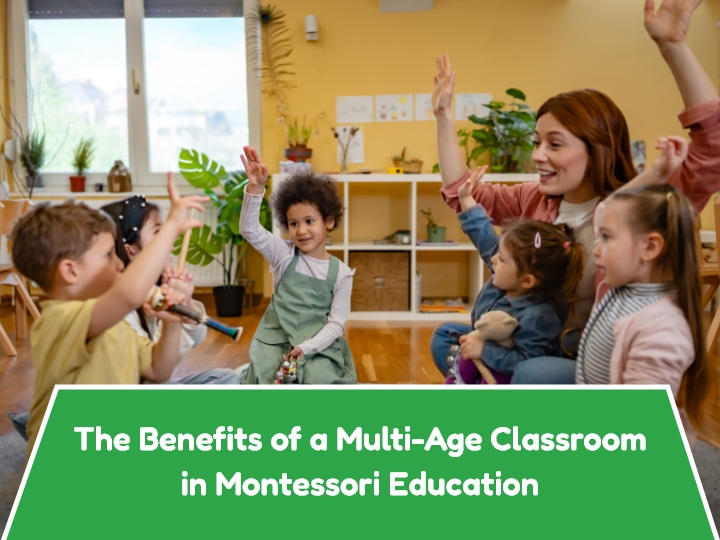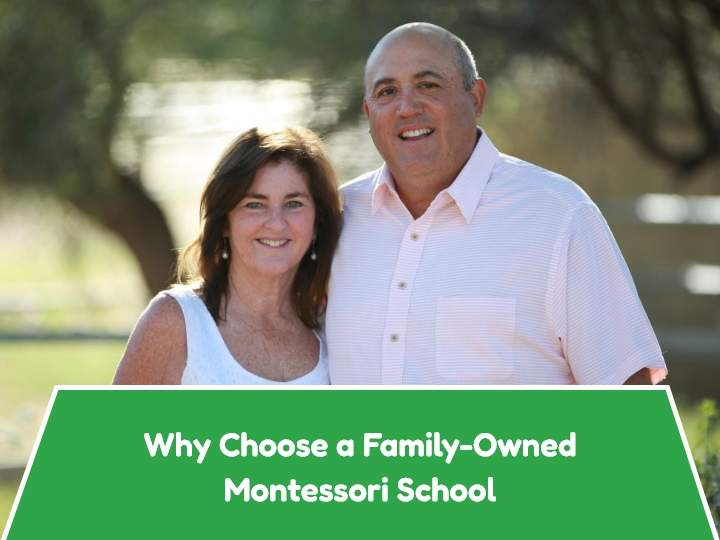One of the most distinctive features of a Montessori preschool and kindergarten is the multi-age classroom. Unlike traditional classrooms that group children by a single age or grade level, Montessori classrooms typically span a three-year age range. For example, a preschool and kindergarten classroom may include children from ages 3 to 6.
This intentional mix of ages may seem unusual at first, but it’s actually one of the most powerful aspects of Montessori education. The multi-age classroom fosters an authentic learning community, where children not only gain academic knowledge but also develop important life skills like leadership, collaboration, and empathy.
Here are some of the key benefits of a multi-age classroom:
1. Leadership and Mentorship Opportunities
Older children in the Montessori classroom naturally take on leadership roles. They model behavior, guide younger peers through classroom routines, and even help them with new materials. These experiences build confidence and reinforce what they’ve already learned. Younger children look up to their older classmates, benefiting from peer mentorship that feels natural, not forced. This dynamic creates a nurturing environment where children feel both supported and empowered.
2. Learning at One’s Own Pace
In a traditional classroom, all children are expected to progress through the same material at the same time. In a Montessori multi-age classroom, children are free to advance at their own pace—regardless of their age. A 4-year-old may be ready for early reading, while a 5-year-old may still be working on foundational math skills. The flexibility of the Montessori method ensures that each child is challenged appropriately, without pressure or comparison.
3. Reinforcement Through Teaching
Research shows that one of the best ways to reinforce a concept is to teach it to someone else. In a multi-age classroom, older children get regular opportunities to “teach” by helping younger children understand lessons or complete activities. This reinforces their own understanding and deepens their mastery. It also encourages empathy and patience—skills that go far beyond academics.
4. Stronger Sense of Community
When children stay in the same classroom for multiple years, strong relationships naturally form between students, teachers, and families. Children don’t have to adjust to a new teacher and peer group each year—they grow and learn alongside familiar faces. This stability creates a sense of belonging and trust, which supports emotional development and academic success.
5. Reduced Competition, Increased Collaboration
Because children are at different stages in their learning, there’s less direct comparison between students. This fosters a cooperative rather than competitive atmosphere. Children learn to celebrate each other’s successes and offer help when needed. The result is a culture of mutual respect and collaboration, where every child is valued for their individual strengths.
6. Holistic Development
In a multi-age classroom, children aren’t confined to expectations based solely on age. This allows for a more holistic view of development—recognizing that each child has unique emotional, social, and academic needs. Teachers can tailor their guidance based on where a child is developmentally, rather than by grade level alone.
Come See the Benefits for Yourself
A multi-age classroom is more than a feature—it’s a foundational element of Montessori education that supports confident, capable, and compassionate learners. If you’re interested in giving your child the advantage of a nurturing, individualized learning environment, we invite you to see it in action.
Contact us today to schedule a tour and learn more about how a Montessori multi-age classroom can help your child thrive.



